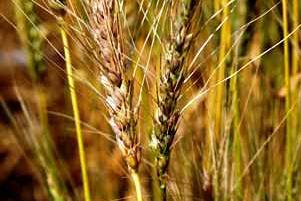UK wheat polluted with fusarium

UK winter wheat testing found crops showing signs of the fungal disease of Fusarium head blight in most field samples, CropMonitor reported.
About 97% of wheat samples taken showed symptoms of Fusarium head blight, a fungal disease encouraged by wet weather that can reduce yields, the crop-quality service reported on its website.
Non-toxin producing species were responsible for the majority of symptoms, according to the report.
About 45% of crops were infected with Fusarium graminearum, a fungus that can produce mycotoxins, or chemicals that can be harmful to humans and animals.
Four percent of those crops were infected with Fusarium graminearum in the ears, or the grain-bearing part of the plant.
“The level of F. graminearum present in crops in 2012 is far greater than the previous high seen in 2008,” CropMonitor wrote.
CropMonitor is a service run by the Food & Environment Research Agency, and partners include the Home-Grown Cereals Authority, the Association of Independent Crop Consultants and Bayer AG (BAYN)’s crop-chemical and seeds unit.











